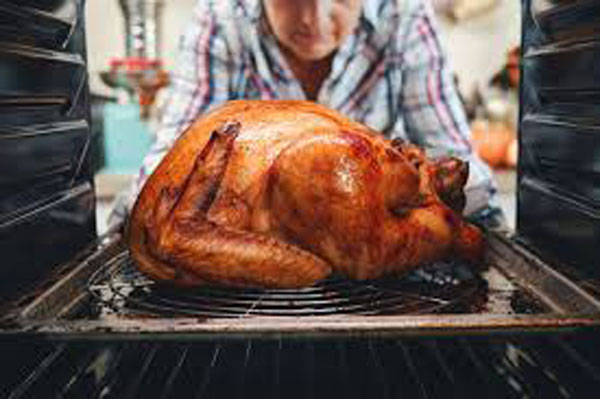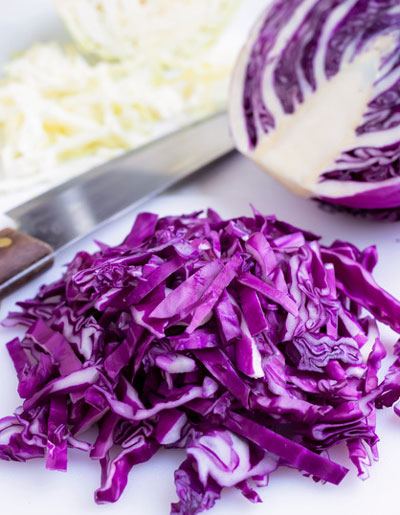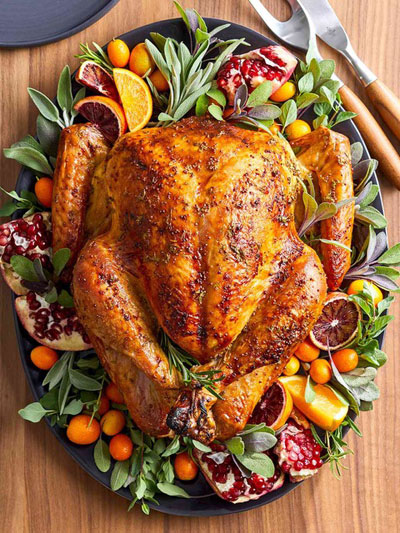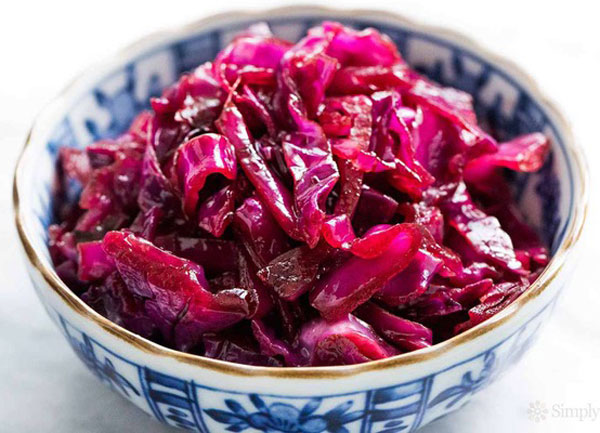|
In
my
socially
ambitious
family
cabbage
was
considered
low-class,
a
smelly
signal
that
someone
wasn't
yet
taking
part
in the
post-War
Economic
Miracle
that
befell
Germany
in the
fifties
and
sixties.
White
cabbage
was
only
eaten
as
Sauerkraut
in my
family,
but
sometimes
in
winter
my
mother
went
back
to her
Westphalian
roots
and
served
braised
red
cabbage
with
Sauerbraten.
In
Paris,
during
my
early
years
of
ballet
and
underground
theater,
cabbage
became
a
welcome
renegade
when
Xmas
loomed.
I
would
spend
the
holiday
in a
caf茅,
then
come
home
to my
towel-size
kitchen
under
the
roofs
and
cook
my
cabbage.
I
scorned
the
traditional
fussy
ingredients
-- bay
leaf,
whole
cloves,
juniper
berries,
red
wine
vinegar,
and
sugar,
simmered
for 2
hours,
with
flower
added
at the
end.
None
of
that
for me.

I would lightly caramelize a big onion, add the chopped red cabbage and a
roughly chopped green apple (Belle de Boskop, firm, tart and fragrant) in
proportions that made intuitive sense, braise it for 15 minutes with salt and
pepper and that was it. There was no need for sugar if you chose the right
apple; no need for spices if you used a good salt (Fleur de Sel from
Bretagne) and freshly ground black pepper. And there certainly was no
need for endless simmering – I never had two hours between rehearsing
and job hunting. I loved the simplicity, the look of the green apple turned
pink, and the rich, sweet-sour taste. I couldn't care less about the pungent
smell -- I had turned the "proletarian" dish of my homeland into my own
"bohemian cabbage" –a dish that cost only a few sous and marked my
chosen status as an "exile," an independent outsider in the opulent City of
Light.

Then I moved to Berkeley, California. The West Coast had brought every
new set of ideas to America and the world, from Free Speech, Hippies and
Apple computers to Alice Waters' California Cuisine. Playful, inventive,
childlike, this New Age food Mecca was toying with Mexican and Asian
flavors . Cabbage from Old Europe was not on the menu.

Imagine my surprise when I had to face what I called "Turkey Tyranny"
not just once, but twice. Thanksgiving, a mere four weeks before Xmas,
could somewhat be alleviated by the new California invention of "Tofurkey
," the ersatz bird made with tofu. I had to realize, however, that my
cabbage dish could not be integrated into a tradition of overcooked green
beans and undercooked Brussel sprouts.

No matter. I enjoyed my dish all through the winter. I now added a
Valencia orange to the caramelized onion, the chopped cabbage and now
Granny Smith apple. I chopped up both fruits in equal-size pieces, big
enough to keep their distinct presence in the mix. I also shaved a teaspoon
of orange rind (of course organic) into the saut茅 pan. The 15 to 20 minutes
of cooking allowed me to warm up a bit of quinoa (precooked in a Chinese
rice cooker) and fry a few slices of tofu with a pinch of Gomasio, a
Japanese blend of toasted sesame seeds and salt.
The dish, in its "pioneer" style tasted just right: more juicy and sweet from
the orange, more spicy from the rind, and altogether so far from its
German origins that I found it exotic—my bohemian red cabbage morphed
into California Cuisine.
(An earlier version of this text was published in Kitchen Works.)
|